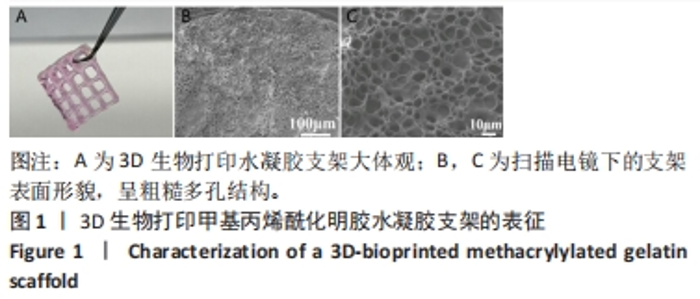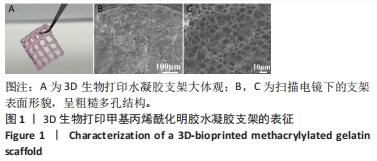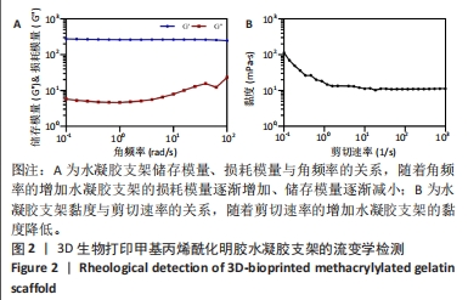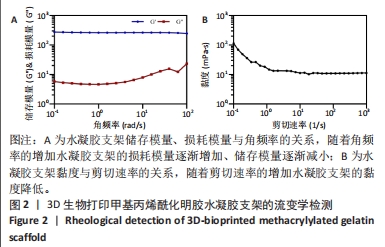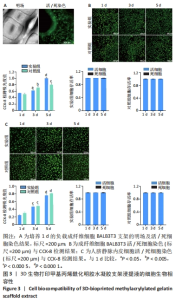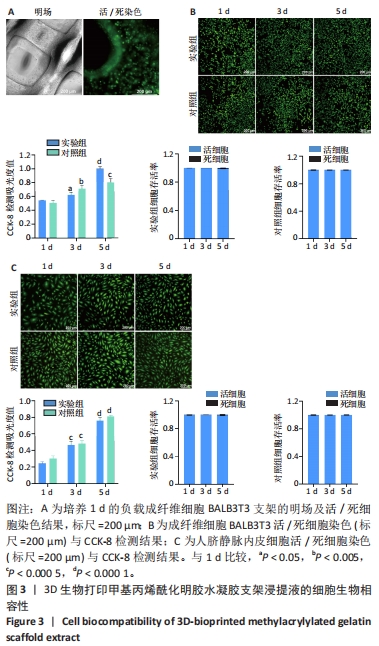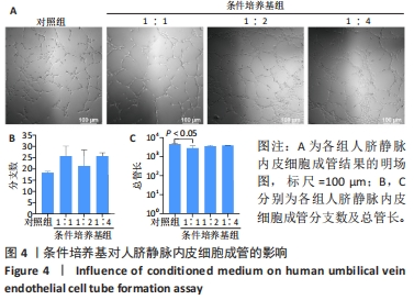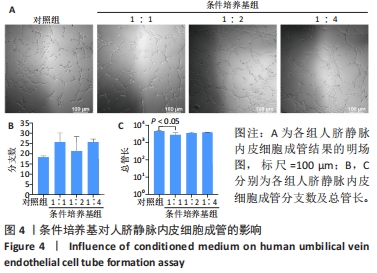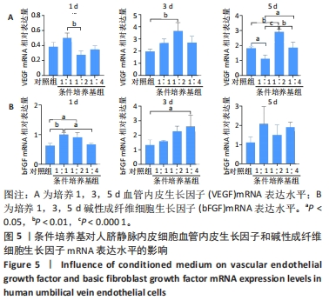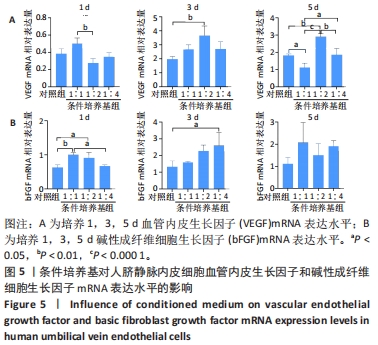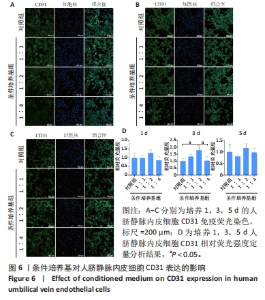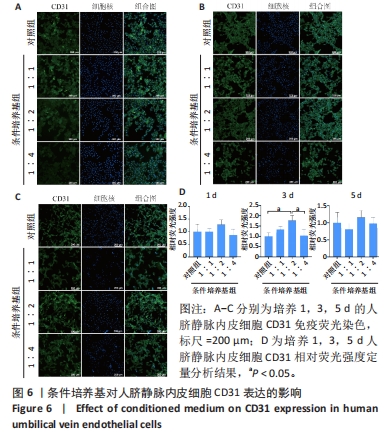| [1] |
Sun Yuting, Wu Jiayuan, Zhang Jian.
Physical factors and action mechanisms affecting osteogenic/odontogenic differentiation of dental pulp stem cells
[J]. Chinese Journal of Tissue Engineering Research, 2025, 29(7): 1531-1540.
|
| [2] |
Aikepaer · Aierken, Chen Xiaotao, Wufanbieke · Baheti.
Osteogenesis-induced exosomes derived from human periodontal ligament stem cells promote osteogenic differentiation of human periodontal ligament stem cells in an inflammatory microenvironment
[J]. Chinese Journal of Tissue Engineering Research, 2025, 29(7): 1388-1394.
|
| [3] |
Zhao Zengbo, Li Chenxi, Dou Chenlei, Ma Na, Zhou Guanjun.
Anti-inflammatory and osteogenic effects of chitosan/sodium glycerophosphate/sodium alginate/leonurine hydrogel
[J]. Chinese Journal of Tissue Engineering Research, 2025, 29(4): 678-685.
|
| [4] |
Zhao Hongxia, Sun Zhengwei, Han Yang, Wu Xuechao , Han Jing.
Osteogenic properties of platelet-rich fibrin combined with gelatin methacryloyl hydrogel
[J]. Chinese Journal of Tissue Engineering Research, 2025, 29(4): 809-817.
|
| [5] |
Liu Haowen, Qiao Weiping, Meng Zhicheng, Li Kaijie, Han Xuan, Shi Pengbo.
Regulation of osteogenic effects by bone morphogenetic protein/Wnt signaling pathway: revealing molecular mechanisms of bone formation and remodeling
[J]. Chinese Journal of Tissue Engineering Research, 2025, 29(3): 563-571.
|
| [6] |
Liu Zhaohui, Han Xiaoqian, Duan Xin, Guo Pengda, Zhang Yuntao.
Salidroside promotes osteogenic differentiation of MC3T3-E1 cells: an in vitro experiment
[J]. Chinese Journal of Tissue Engineering Research, 2025, 29(2): 231-237.
|
| [7] |
Dumanbieke·Amantai, He Huiyu, Han Xiangzhen.
Hydroxyapatite-graphene oxide composite coating promotes bone defect repair in rats
[J]. Chinese Journal of Tissue Engineering Research, 2025, 29(10): 2030-2037.
|
| [8] |
Zhang Zhibo, Wang Zhaolin, Wang Zhigang, Li Peng, Jiang Jianhao, Zhang Kai, Yang Shuye, Du Gangqiang.
Ilizarov bone transport combined with antibiotic bone cement promotes junction healing of large tibial bone defect
[J]. Chinese Journal of Tissue Engineering Research, 2025, 29(10): 2038-2043.
|
| [9] |
Hu Zezun, Yang Fanlei, Xu Hao, Luo Zongping.
Effect of surface roughness of polydimethylsiloxane on osteogenic differentiation of bone marrow mesenchymal stem cells under stretching conditions
[J]. Chinese Journal of Tissue Engineering Research, 2025, 29(10): 1981-1989.
|
| [10] |
Huang Liping, Li Hui, Wang Xinge, Wang Rui, Chang Bei, Li Shiting, Lan Xiaorong, Li Guangwen.
Effects of microstructured bone implant material surfaces on osteogenic function of MC3T3-E1 osteoblasts
[J]. Chinese Journal of Tissue Engineering Research, 2025, 29(10): 1990-1996.
|
| [11] |
Zhou Shijie, Li Muzhe, Yun Li, Zhang Tianchi, Niu Yuanyuan, Zhu Yihua, Zhou Qinfeng, Guo Yang, Ma Yong, Wang Lining.
Effect of Wenshen Tongluo Zhitong formula on mouse H-type bone microvascular endothelial cell/bone marrow mesenchymal stem cell co-culture system
[J]. Chinese Journal of Tissue Engineering Research, 2025, 29(1): 8-15.
|
| [12] |
Wang Chenglong , Yang Zhilie , Chang Junli , Zhao Yongjian , Zhao Dongfeng , Dai Weiwei , Wu Hongjin , Zhang Jie , Wang Libo , Xie Ying , Tang Dezhi , Wang Yongjun , Yang Yanping.
Restoration of osteogenic differentiation of bone marrow mesenchymal stem cells in mice inhibited by
cyclophosphamide with psoralen
[J]. Chinese Journal of Tissue Engineering Research, 2025, 29(1): 16-23.
|
| [13] |
Mao Jiaqi, Zhao Liru, Yang Dongru, Hu Yongqing, Dai Bowen, Li Shujuan.
Osteogenic ability and autophagy level between normal and inflammatory periodontal ligament stem cells
[J]. Chinese Journal of Tissue Engineering Research, 2025, 29(1): 74-79.
|
| [14] |
Zheng Qian, Liu Pingping, Gu Yujie, Xie Lei.
Effect of ursolic acid on osteogenic differentiation of human periodontal ligament stem cells#br#
[J]. Chinese Journal of Tissue Engineering Research, 2025, 29(1): 80-86.
|
| [15] |
Yang Yufang, Yang Zhishan, Duan Mianmian, Liu Yiheng, Tang Zhenglong, Wang Yu.
Application and prospects of erythropoietin in bone tissue engineering
[J]. Chinese Journal of Tissue Engineering Research, 2024, 28(9): 1443-1449.
|
